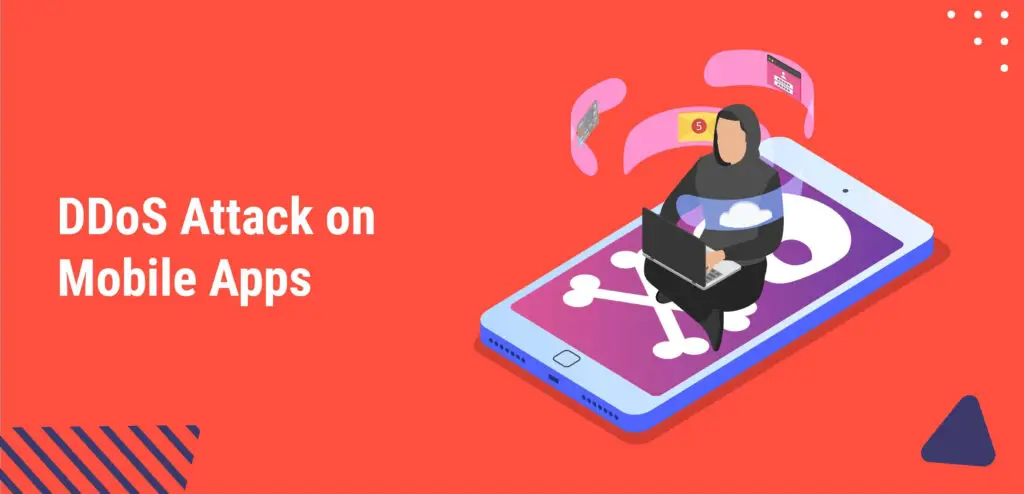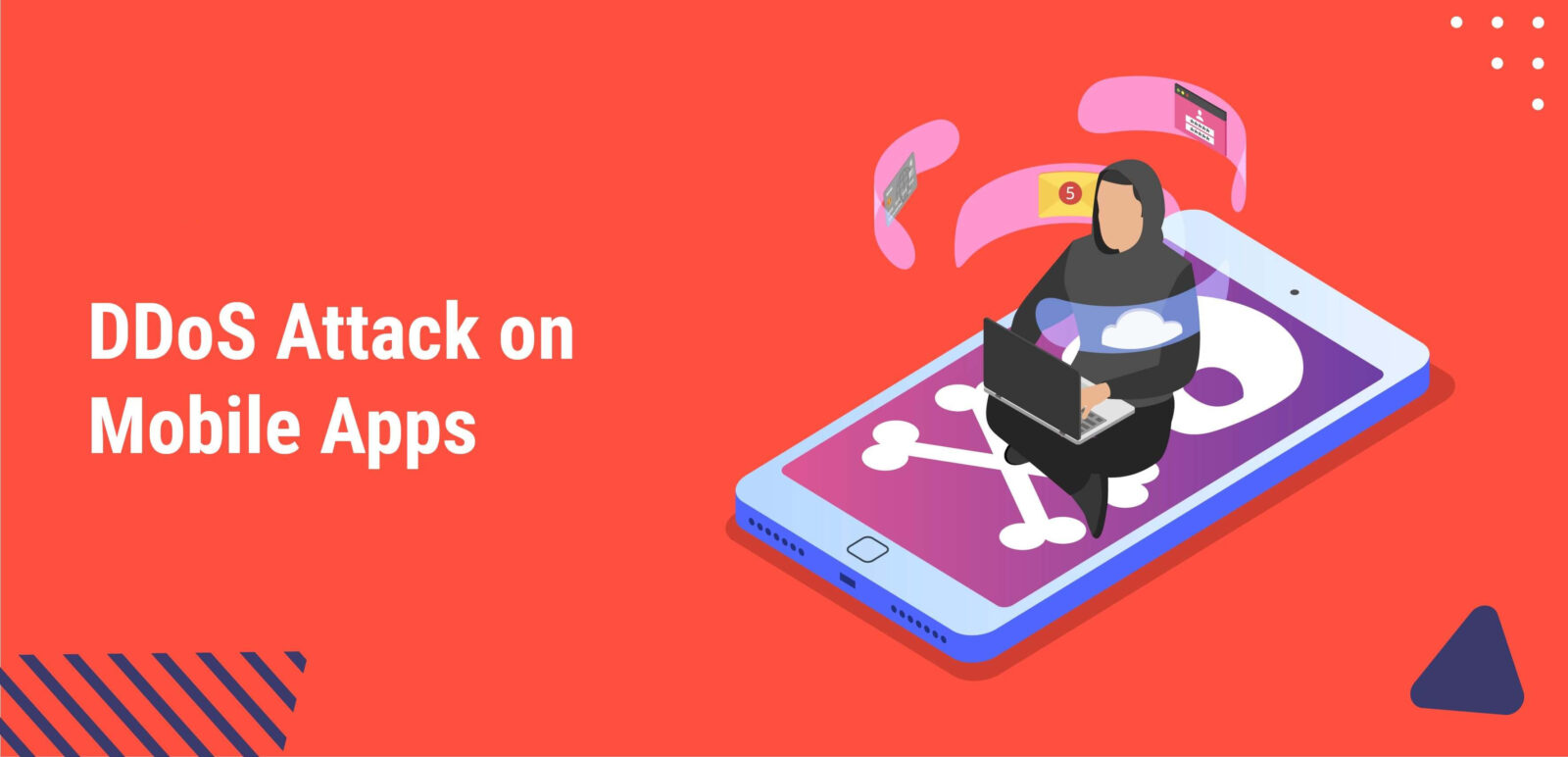

Android App DDoS Attack – Risks And Prevention by Zehra Ali
The DDoS attack has always been a threat to webmasters, which is now being initiated by many apps too. Some malicious mobile apps seem to be normal apps and are downloaded by a large number of users. In return, these users become tools for hackers to dynamically target websites.
In the past few years, it is seen that thousands of mobile devices, using DDoS attack tools, give a single attack of the same severity as a DDoS attack by PC botnet. This approach indicates that hackers are becoming more efficient in intensifying the impact of an attack.
The distributed Denial of Services attack (DDoS) is when multiple requests are sent to a network making its servers and bandwidth overwhelmed. Therefore, the website becomes unresponsive and crashes.
Why is There an Increased Risk of DDoS Attack in 2021 and Future?
2020 was a busy year for cybercriminals as they have increased sources of initiating a DDoS attack and that’s why some of the largest DDoS attacks surfaced on the internet. With Covid-19, everything was changed and so is the online activity. A massive shift towards the internet – be it education, healthcare, shopping, office work, or banking – has provided cybercriminals with many victims and huge profit probability. However, the availability of 5G technology has increased the expansion of IoT and smart devices, enhancing the availability of recruits for botnet armies to initiate a massive attack.
Also, the presence and anonymous nature of the Dark Web and Cryptocurrencies have made illegal transactions easier and convenient. The DDoS attacks have become more powerful and more advanced from a mere botnet-based manner to artificial intelligence (AI) and data-driven models.
DDoS attack: What Does It Look Like on a Mobile App?
Like websites, there is a high risk of DDoS attacks on mobile apps. A few of those examples are LinkedIn, Facebook, and Uber which are vulnerable to this kind of malware infection.
The DDoS attack on mobile apps is not very challenging for attackers because of two main reasons. First, the app users can be profiled easily, which enhances the chance of a successful DDoS attack. Second, mobile applications can be made by anyone and they often possess security loopholes. For instance, e-commerce websites are most vulnerable. Appvigil’s study found that from 50 examined e-commerce apps, 80% were vulnerable to hacking.
It is simple to know how a DDoS attack works or looks like on a mobile app. First, it is important to know that a vulnerable app doesn’t seem different from a legitimate app. Therefore, when a user downloads a malicious app, the attacker could take control of his/her device. So, they are prone to two things: becoming a victim of a DDoS attack or becoming a source for a DDoS attack.
For an organization, the DDoS attack is more damaging. It blocks legitimate traffic from coming to their website, which decreases their revenue, and they need to put investments in reviving the website. However, such attacks could negatively affect the trust of site visitors and customers.
PlayStore Apps are Also Risky
Last year, ESET researchers found a malicious Android app that had attacked their website. That app was accused of launching a DDoS attack. Fortunately, the website was ESET and their researchers were able to spot the app, analyze it, and report it to Google (the app was promptly removed from Play Store).
However, in 2017, Google removed 300 Android apps that were secretly hijacking phones for DDoS attacks. This was the first and biggest DDoS attack on the Android system. The apps removed by Google were offering services like ringtones and store managers after the security researchers found out that the “WireX” botnet was behind the maneuver. Any device with those malicious apps was being used in the DDoS attack as long as it had been switched on. Some researchers had claimed that up to 70,000 devices in 100 countries had been compromised.
How To Avoid DDoS Attack: As a Person and As an Organization
If you are curious to find ways to prevent DDoS attacks, then either you are an individual who doesn’t want to be used as a tool and to be put in jeopardy or an organization willing to keep your website safe. Don’t worry, we have a solution for both.
Defend DDoS as an Organization
Here are the ways to keep your website safe from a DDoS attack.
1. Keep an eye on your website activity
When you are closely monitoring your website activity, such as the traffic and performance, it will be easy for you to figure out a change before it’s too late.
2. Go for a high website capacity
As you know, a DDoS attack targets a website by overwhelming its servers with numerous requests. However, if you have a high capacity for your website’s traffic, you can maintain the performance and nullify the DDoS attack’s impact. This capacity could be increased through selecting hosting solutions with high processing and memory resources (or the ones that can automatically scale).
3. Use a website security provider
If you think that you cannot handle the risk of a DDoS attack internally then you may go for a third-party security provider such as Sucuri.
4. Use a web application firewall
Some firewalls detect fake traffic and block all such malicious attempts from bots. Also, the benefit of such firewalls is that they don’t disturb the legitimate traffic of your website, keeping your business as profitable as it was. There are many good firewalls out there from which you can select the perfect one according to your need.
5. Always remember the loss
It is most common among us as individuals or organizations that we think about the resources we invest in security and precautions. However, we never think about the loss we could face due to an attack. The amount you invest in security is much less than the one you could face after a DDoS attack.
If you are an e-commerce website owner and your site encounters a DDoS attack during the holiday season, then you have to give up on a hefty profit. And remember, the hacker always attempts to attack when they know they will gain the most.
Defend DDoS as an Individual
The most important thing is to educate yourself about the security precautions when downloading a mobile application. However, there are various healthy practices to secure your mobile apps from malware attacks.
1. Install the app from reputable developers
As mentioned, the apps on Google Play Store could also be infected with malware. This is not very common, but it is best to take all the precautions from your side. Therefore, before downloading any app, you should see the developer and its reputation. Also, avoid downloading any app that seems to be a clone of any app.
Make sure that the apps you download are serving the purpose they claim. If they are ill-functioning, then delete that app.
2. Don’t use third party sites to download apps
Downloading an app from the owner site ensures that you are downloading the updated version and the authentic ones.
3. Keep your apps and operating systems updated
Make sure your apps are updated because an outdated app is an easy target for cybercriminals. Developers release an update when they fix a security loophole or enhance the app’s performance. In both cases, delaying the update is not a good idea.
4. Install anti-virus software on your Android phone
There are numerous anti-virus apps. However, here also you need to be cautious while selecting one for your Android phone. Anti-virus software helps to detect and prevent a malware attack.
You need to regularly scan your phone for malware. If you don’t want to do it again and again, just set it up for the automatic scan.
If you are looking for online privacy along with DDoS protection, then you can go for antivirus with VPN. This will provide you much-added anonymity, privacy, and security.
5. Read user reviews before downloading any app
Genuine user review is a great source of knowing the authenticity and performance of an app without actually using it.
If a user faces any issue or malware, it is most probable that he/she shares that in the review section. Also, the overall rating and number of downloads give you an idea of how that app works. If you are willing to download an app that is new and has no reviews on Play Store, then you can gather some information through browsing.
Final Words
The phrase ‘prevention is better than cure’ is true for all. Whether you are an organization or an individual, your proactiveness can protect you from severe loss. Although it is not possible to have guaranteed DDoS protection, you can plan it in a way that you face the least damage. It is really difficult for the attackers to target you or your website with better protections in place.
About the Author:
Zehra Ali is a journalist with 4 years of experience in the infosec industry. She writes on topics related to cybersecurity, IoT, AI, Big Data, and other privacy matters on various platforms. She has contributions on Hackread, scnsoft, hackeronlineclub, bigdata-madesimple, Tripwire, Beencrypted, and many other websites. She has been mentioned in CSO online too.




















Leave a Reply